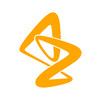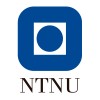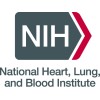
Rosuvastatin in the Long-term Treatment of Hypercholesterolaemic Subjects With Coronary Heart Disease...
HypercholesteremiaThe primary objective of this study is to evaluate that 76 weeks of treatment with rosuvastatin calcium 2.5-20 mg results in no progression of coronary artery atherosclerotic volume as measured by intravascular ultrasonography (IVUS) imaging in hypercholesterolaemic subjects with coronary heart disease (CHD).

PROMUS Element Japan Small Vessel Trial
AtherosclerosisCoronary Artery DiseaseA non-randomized, small vessel (SV) trial at approximately 15 sites in Japan to enroll 60 patients with a de novo lesion ≤28 mm in length (by visual estimate) in a native coronary artery ≥2.25 mm to <2.50 mm in diameter (by visual estimate). Approximately thirty patients will be randomly assigned to the angiographic subset to also undergo angiographic assessment after the 12-month clinical follow-up.

Effect of Chinese Traditional Medicine for Post Revascularization Treatment of Coronary Artery Disease...
Percutaneous Coronary Artery InterventionCoronary Artery Bypass Graft1 moreThe purpose of this study is to built the standard of Chinese Traditional Medicine test for Post percutaneous coronary artery intervention and coronary artery bypass graft,also for acute coronary syndrome,according to the multi-site、random large sample test.

Maximal Leg Press Strength Training Study for Coronary Artery Disease Patients
Heart FailureCoronary Artery DiseaseMaximal strength training has been shown to increase muscular strength, muscular volume and work economy. An 8 week maximal leg press training regime will be conducted on cardiac heart failure patients to evaluate whether they increase their maximal leg press strength, work economy, serum testosterone and quality of life. The study hypotheses are that: Aerobic work capacity will increase due to increased work economy, without increases in maximal oxygen uptake. Strength training will increase serum testosterone.

Cholesterol Lowering Level of MK0653A+Simvastatin in Patients With Hypercholesterolemia and Atherosclerotic...
HypercholesterolemiaAtherosclerotic Disease1 moreA 6-week treatment study to compare the reduction in cholesterol of two drugs MK0653A+Simvastatin for high cholesterol, in patients with hypercholesterolemia and atherosclerotic or coronary vascular disease.

Study of Blood Flow in Heart Muscle
Coronary DiseaseHealthy2 moreBlood flows to areas of the heart providing oxygen and fuel to the pumping muscle. Occasionally the arteries providing the fuel can become blocked. This occurs in coronary artery disease. Magnetic resonance imaging (MRI) can be used to evaluate the blood flow to different areas of the heart muscle. In this study magnetic resonance imaging will be compared to other diagnostic tests (radionucleotide perfusion studies) capable of measuring blood flow to heart muscle.

Myocardial Contrast Echocardiography (MCE) to Check for Living and Working Heart Muscle
Coronary DiseaseHeart DiseasesCoronary artery disease (CAD) can cause poor blood flow and supply to the heart muscle. It can result in irreversible damage to the heart muscle and poor function. Before treating patients with heart disease it is important to know how well the heart is functioning. Echocardiography is a diagnostic test that can measure heart function. If part of the heart muscle is not working properly due to previous damage, echocardiography can provide information about how much improvement can be expected after treatment (surgery or angioplasty). The purpose of this study is to compare the accuracy of myocardial contrast echocardiography (MCE) to dobutamine echocardiography to detect the potential for damaged heart muscle to be treated and function in patients with heart disease. Myocardial contrast echocardiography (MCE) does not use radioactivity. It uses sound waves like standard echocardiography. However, with MCE patients receive an injection of a "contrast agent" directly into the blood stream through a vein. The contrast agent, called Optison, is made of tiny microbubbles smaller than red blood cells. The echocardiogram can detect these microbubbles in the small blood vessels of the heart muscle and allow researchers to find areas of the heart receiving less blood flow than others. Echocardiography with Dobutamine does not use radioactivity. It uses sound waves, like standard echocardiography. During this echocardiogram patients receive doses of a medication called dobutamine that stimulates the heart to beat stronger and faster. Heart muscle that does not beat stronger after dobutamine is probably dead, usually as a result of a previous heart attack.

A Randomized Trial of a Biolimus-Coated Balloon Versus POBA in Small Vessel Coronary Artery Disease...
Coronary Artery DiseaseThis study is a prospective, multicenter, randomized, blind, parallel and superiority test study. It is planned to select 206 cases of subjects with small coronary artery vessel disease who meet the inclusion/exclusion criteria. They are randomly divide them into Biolimus release coronary balloon catheter treatment group and plain old balloon angioplasty catheter (Powerline) treatment group according to the ratio of 1:1. All subjects accept clinical follow-up after operation, at 30 days, 6 months, 9 months and 12 months after operation. Follow-up with angiography is conducted at 9 months. The late lumen loss in diseased segment at 9 months after operation is the primary endpoint.

Detection of Coronary Artery Disease With Micro Electro-Mechanical Sensors
Coronary Artery DiseaseThis study aims to validate the sensor data of gyroscope and accelerometer in detection of hemodynamically significant CAD.

Heterogeneity of Neointimal Healing Following Biodegradable-polymer Drug-Eluting Coronary Stent...
Coronary Heart DiseaseStable Angina Pectoris1 moreThe objective of this study is a comparative evaluation of Orsiro stent and of Resolute Integrity stent in terms of the extent of neointima formation at 4 months after implantation using optical coherence tomography (OCT).
